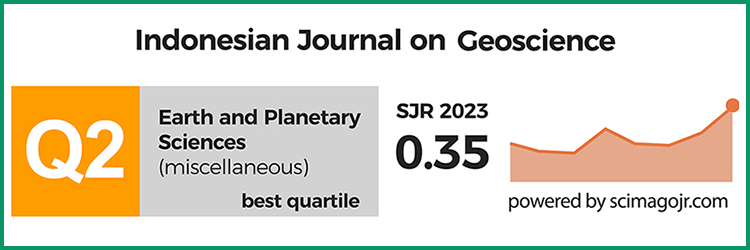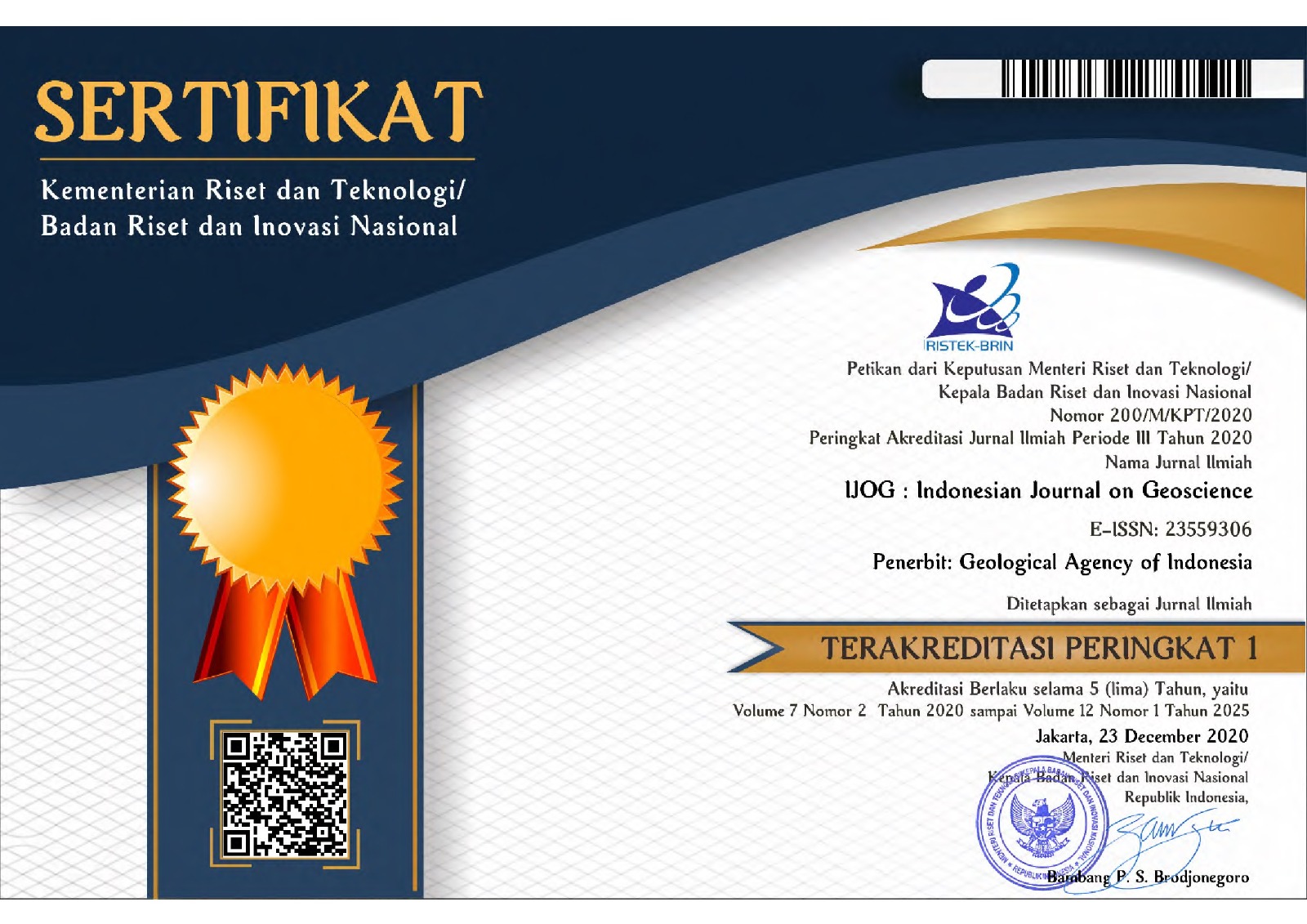Seismicity Pattern of the Great Sumatran Fault System from Hypocenter Relocation of Regional Seismic Network
DOI:
https://doi.org/10.17014/ijog.10.1.83-95Keywords:
Great Sumatra Fault, hypocenter, relocation, double-difference methodAbstract
The seismicity pattern along the Great Sumatran Fault (GSF) was analyzed during April 2009 - December 2017 period with magnitude of >3.0 and depth of < 30 km. Of 752 preliminary absolute locations, 695 were successfully relocated using double-difference method to provide an improved view of seismicity, sharpening locations and interpretations of seismogenic features throughout the region. The relocation results depict a pattern of significant increase on small to intermediate earthquakes occurring in a shallow part of northern Sumatra, i.e. the Aceh and Seulimeum segments, as well as in central Sumatra, i.e. the Toru and Barumun. This increase was interpreted due to indications of creeping that reduce or prevent stress build-up on these segments. Meanwhile, few segments, i.e. the Tripa segment in the northern part, then Suliti and Siulak segments in the central part, and Manna segment in the southern part of Sumatra show the least activities over the period. These segments were identified as lock asperity, which caused accumulating stress that could be released as an earthquake. The behaviour of these locking segments can be related to the seismic gap along the GSF which has not experienced major earthquakes (M>7) since 2000, making the densely populated area around these segments potentially have a great seismic hazard in the future.
Downloads
Published
10-02-2023
How to Cite
Putra, A. S., Nugraha, A. D., Sahara, D. P., Zulfakriza, Z., Puspito, A. N. T., Muttaqy, F., … Daryono, D. (2023). Seismicity Pattern of the Great Sumatran Fault System from Hypocenter Relocation of Regional Seismic Network. Indonesian Journal on Geoscience, 10(1), 83–95. https://doi.org/10.17014/ijog.10.1.83-95
Issue
Section
Articles



















